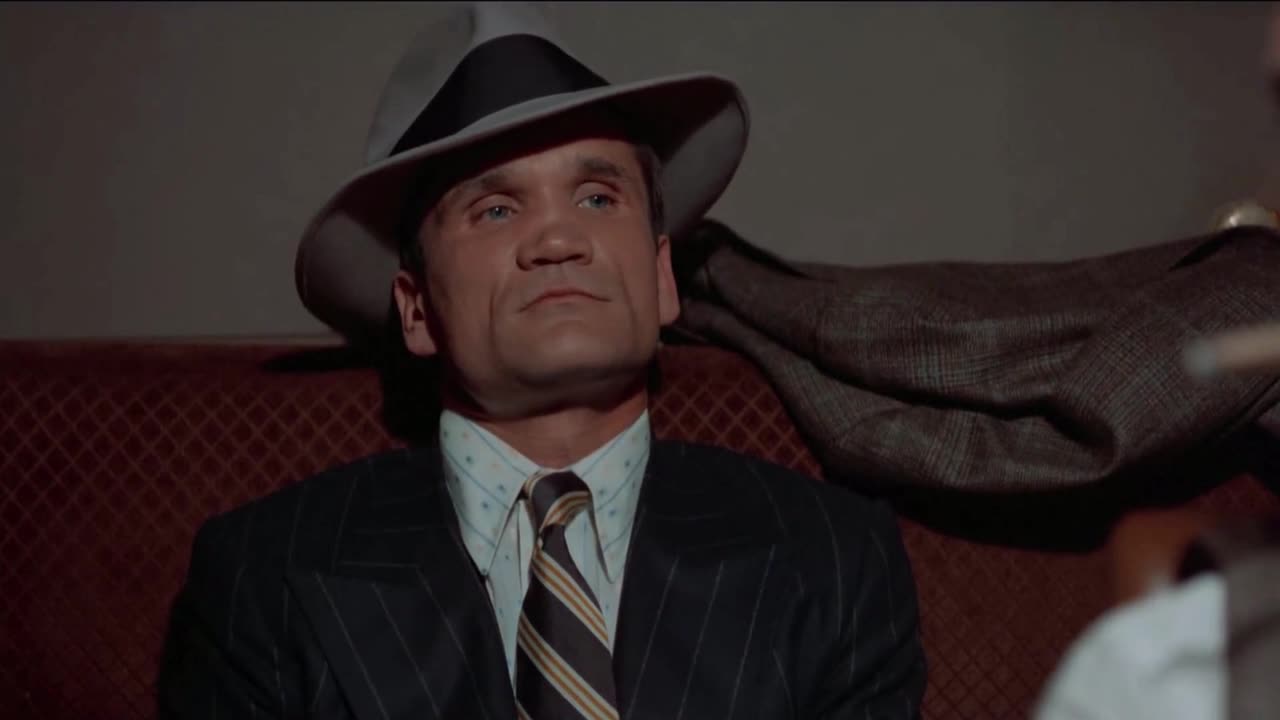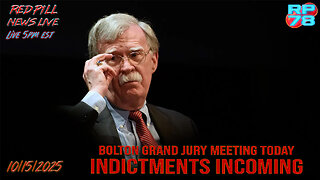Premium Only Content

Scott Joplin The Entertainer
"The Entertainer" is a 1902 classic piano rag written by Scott Joplin.
It was sold first as sheet music by John Stark & Son of St. Louis, Missouri, and in the 1910s as piano rolls that would play on player pianos.[1] The first recording was by blues and ragtime musicians the Blue Boys in 1928, played on mandolin and guitar.
As one of the classics of ragtime, it returned to international prominence as part of the ragtime revival in the 1970s, when it was used as the theme music for the 1973 Oscar-winning film The Sting. Composer and pianist Marvin Hamlisch's adaptation reached No. 3 on the Billboard pop chart and spent a week at No. 1 on the easy listening chart in 1974.
The Recording Industry Association of America ranked it at No. 10 on its "Songs of the Century" list.
In November 1970, Joshua Rifkin released a recording called Scott Joplin: Piano Rags on the classical label Nonesuch, which featured as its second track "The Entertainer". It sold 100,000 copies in its first year and eventually became Nonesuch's first million-selling record. The Billboard Best-Selling Classical LPs chart for September 28, 1974, has the record at No. 5, with the follow-up, Volume 2, at No. 4, and a combined set of both volumes at No. 3. Separately both volumes had been on the chart for 64 weeks. The album was nominated in 1971 for two Grammy Award categories, Best Album Notes and Best Instrumental Soloist Performance (without orchestra), but at the ceremony on March 14, 1972, Rifkin did not win in any category. In 1979 Alan Rich in the New York Magazine wrote that by giving artists like Rifkin the opportunity to put Joplin's music on disk, Nonesuch Records "created, almost alone, the Scott Joplin revival".
Marvin Hamlisch lightly adapted and orchestrated Joplin's music for the 1973 film The Sting, for which he won an Academy Award for Best Original Song Score and Adaptation on April 2, 1974. His version of "The Entertainer" reached No. 3 on the Billboard Hot 100 on May 18, 1974, prompting The New York Times to write, "the whole nation has begun to take notice". Thanks to the film and its score, Joplin's work became appreciated in both the popular and classical music worlds, becoming (in the words of music magazine Record World), the "classical phenomenon of the decade".
The Sting is a 1973 American caper film set in September 1936, involving a complicated plot by two professional grifters (Paul Newman and Robert Redford) to con a mob boss (Robert Shaw). The film was directed by George Roy Hill, who had directed Newman and Redford in the western Butch Cassidy and the Sundance Kid. Created by screenwriter David S. Ward, the story was inspired by real-life cons perpetrated by brothers Fred and Charley Gondorff and documented by David Maurer in his 1940 book The Big Con: The Story of the Confidence Man.
The title phrase refers to the moment when a con artist finishes the "play" and takes the mark's money. If a con is successful, the mark does not realize he has been cheated until the con men are long gone, if at all. The film is played out in distinct sections with old-fashioned title cards drawn by artist Jaroslav "Jerry" Gebr, the lettering and illustrations rendered in a style reminiscent of the Saturday Evening Post. The film is noted for its anachronistic use of ragtime, particularly the melody "The Entertainer" by Scott Joplin, which was adapted (along with others by Joplin) for the film by Marvin Hamlisch (and a top-ten chart single for Hamlisch when released as a single from the film's soundtrack). The film's success created a resurgence of interest in Joplin's work.
Released on Christmas Day of 1973, The Sting was a massive critical and commercial success and was hugely successful at the 46th Academy Awards, being nominated for ten Oscars and winning seven, including Best Picture, Best Director, Best Film Editing and Best Writing (Original Screenplay); Redford was also nominated for Best Actor. The film also rekindled Newman's career after a series of big screen flops. Regarded as having one of the best screenplays ever written, in 2005, The Sting was selected for preservation in the U.S. National Film Registry of the Library of Congress as being "culturally, historically, or aesthetically significant".
In 1936, during the Great Depression, Johnny Hooker, a grifter in Joliet, Illinois, cons $11,000 in cash in a pigeon drop from an unsuspecting victim with the aid of his partners Luther Coleman and Joe Erie. Buoyed by the windfall, Luther announces his retirement and advises Hooker to seek out an old friend, Henry Gondorff, in Chicago to learn "the big con". Unfortunately, the reason their victim had so much cash was that he was a numbers racket courier for vicious crime boss Doyle Lonnegan. Corrupt Joliet police Lieutenant William Snyder confronts Hooker, revealing Lonnegan's involvement and demanding part of Hooker's cut. Having already blown his share on a single roulette spin, Hooker pays Snyder in counterfeit bills. Lonnegan's men murder both the courier and Luther, and Hooker flees for his life to Chicago.
Hooker finds Gondorff, a once-great con-man now hiding from the FBI, and asks for his help in taking on the dangerous Lonnegan. Gondorff is initially reluctant, but he relents and recruits a core team of experienced con men to dupe Lonnegan. They decide to resurrect an elaborate obsolete scam known as "the wire", using a larger crew of con artists to create a phony off-track betting parlor. Aboard the opulent 20th Century Limited, Gondorff, posing as boorish Chicago bookie Shaw, buys into Lonnegan's private, high-stakes poker game. He infuriates Lonnegan with obnoxious behavior, then out-cheats him to win $15,000. Hooker, posing as Shaw's disgruntled employee Kelly, is sent to collect the winnings and instead convinces Lonnegan that he wants to take over Shaw's operation. Kelly reveals that he has a partner named Les Harmon (actually con man Kid Twist) in the Chicago Western Union office, who will allow them to win bets on horse races by past-posting.
-
 12:03
12:03
Psychological operations
1 day agoHey Soul Sister 50 Ways To Say Goodbye Drops Of Jupiter Train
12 -
 3:38:42
3:38:42
MattMorseTV
4 hours ago $90.52 earned🔴Trump's FBI dropped a BOMBSHELL.🔴
125K81 -
 DVR
DVR
Kim Iversen
2 hours agoIsrael VIOLATES Ceasefire Deal | Kamala Says She's Most Qualified EVER
7.66K108 -
 LIVE
LIVE
Dr Disrespect
8 hours ago🔴LIVE - DR DISRESPECT - BATTLEFIELD 6 - THE PERFECT WEAPON
1,381 watching -
 LIVE
LIVE
Nikko Ortiz
49 minutes agoBattlefield 6 We Blastin... |Rumble Live
103 watching -
 LIVE
LIVE
Red Pill News
2 hours agoBolton Grand Jury Reviewing Evidence NOW on Red Pill News Live
3,990 watching -
 LIVE
LIVE
Wayne Allyn Root | WAR Zone
7 hours agoWatch LIVE: The War Zone Podcast with Wayne Allyn Root
54 watching -
 1:23:55
1:23:55
Benny Johnson
3 hours ago🚨Trump LIVE Right Now at Emergency Press Conference with FBI Director Kash Patel in Oval Office
42.8K49 -
 3:22:05
3:22:05
Right Side Broadcasting Network
9 hours agoLIVE: President Trump Hosts a Press Conference with FBI Director Kash Patel - 10/15/25
134K18 -
 44:24
44:24
Clownfish TV
5 hours agoCNN is Angry 'The Male Gaze' Returned! TRADWIVES and SYDNEY SWEENEY are Blamed?! | Clownfish TV
27.2K16